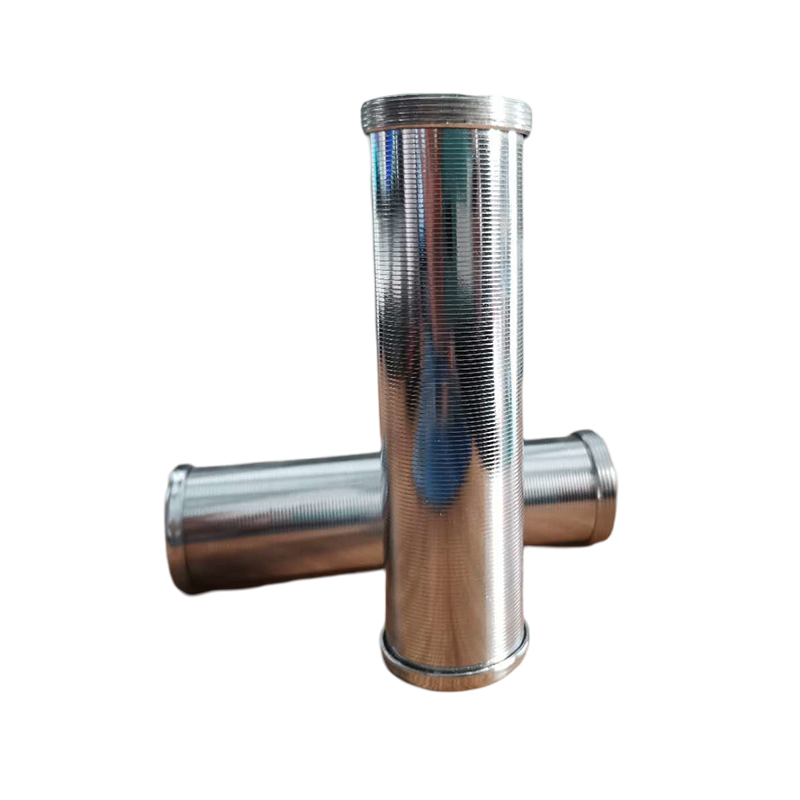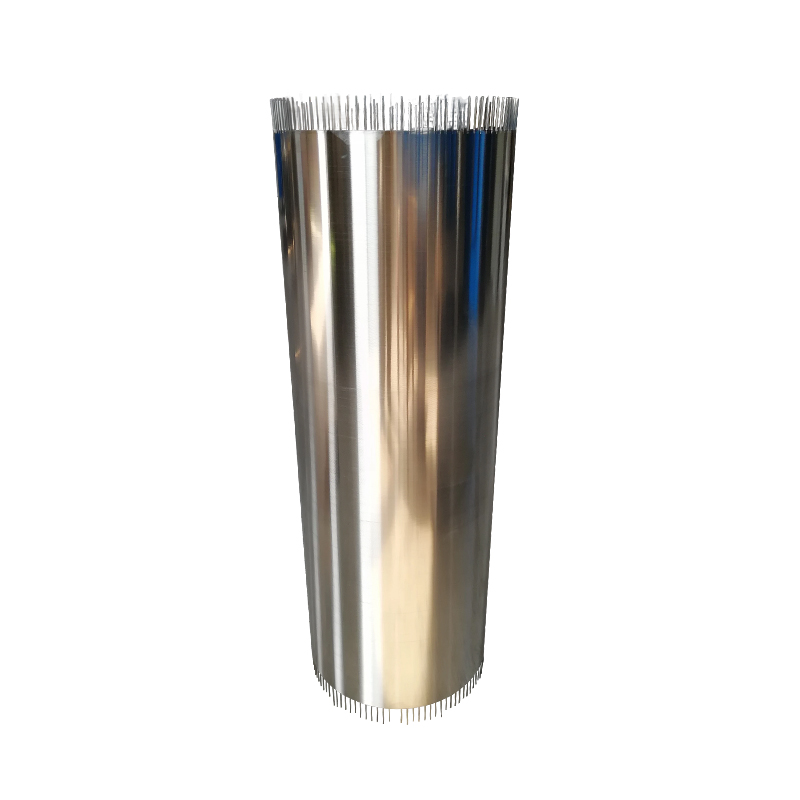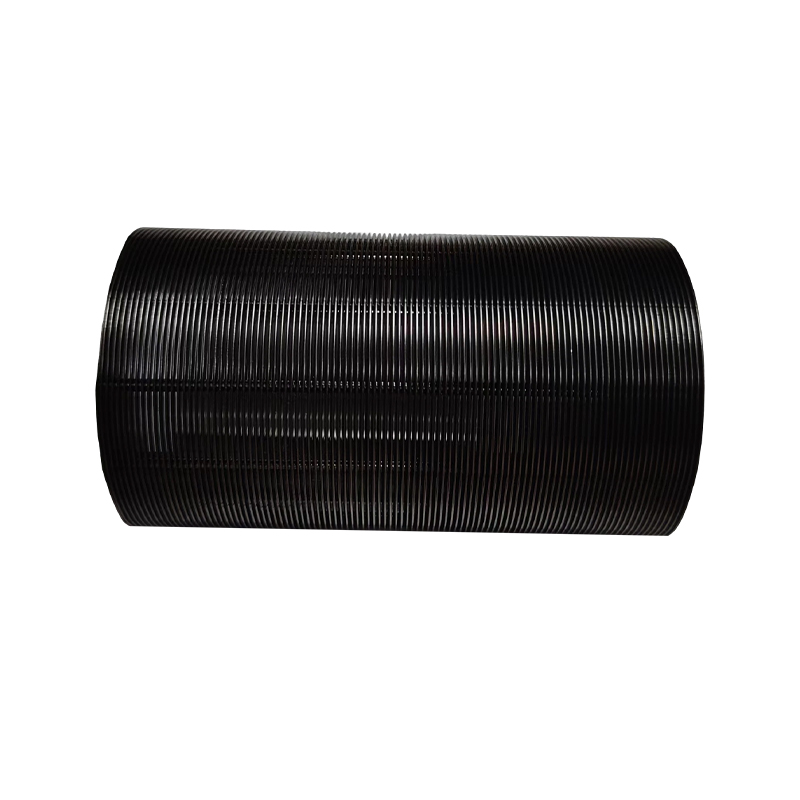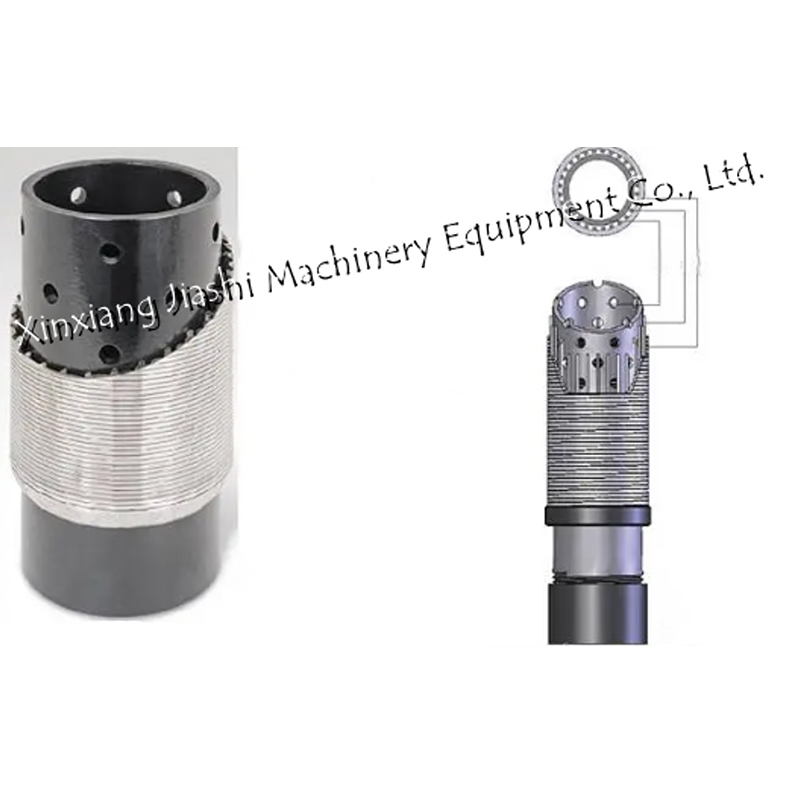How to optimize the anti-clogging ability of high precision wire wrapped screen during dynamic filtration?
Release Time : 2025-10-16
In dynamic filtration scenarios, the anti-clogging performance of high-precision wire-wrapped screens directly impacts equipment efficiency and service life. Optimizing anti-clogging performance requires a comprehensive approach encompassing structural design, material selection, dynamic control, and maintenance strategies, resulting in a systematic solution.
From a structural design perspective, the core advantage of high-precision wire-wrapped screens lies in the trapezoidal slits formed by the continuous winding of the wire. This structure, with its "V"-shaped opening, ensures point contact with solid particles, rather than surface contact. Theoretically, there are only two states: retention or passage, effectively avoiding the clogging caused by particle entrapment in traditional screens. In practical applications, the slit width-to-depth ratio must be optimized based on the characteristics of the filter medium. For example, in formations containing fine silt, the slit width can be reduced and the "V" groove deepened to enhance the retention of fine particles while maintaining smooth fluid flow. Furthermore, the arrangement of the support ribs has a dual impact on screen strength and filtration area. A uniform circular distribution improves overall compressive strength and prevents slit closure caused by localized deformation.
Material selection is fundamental to anti-clogging performance. High-precision wire wrapped screens are commonly made of materials such as 304, 316L stainless steel, or Hastelloy. These materials not only offer excellent corrosion resistance, but their performance can also be further enhanced through surface treatment. For example, passivation treatment of screens exposed to acidic fluids can form a dense oxide film, reducing crack expansion or material spalling caused by chemical corrosion. For high-temperature operating conditions, alloys with a low thermal expansion coefficient are required to prevent screen deformation caused by temperature fluctuations. Material hardness is also critical. Materials that are too soft are easily abraded by particles, resulting in rounded crack edges and reduced retention accuracy. Materials that are too hard may cause stress concentration and increase the risk of fracture.
The control strategy during dynamic filtration directly impacts anti-clogging effectiveness. In traditional static filtration, particles easily form a low-permeability sand layer on the screen surface, obstructing fluid flow. Dynamic filtration, however, introduces fluid pulsation or screen vibration to keep particles suspended and reduce deposition. This can be achieved by adjusting the pumping frequency to periodically vary the fluid pressure, breaking up existing sand bridges. Alternatively, a vibrating device can be installed on the screen to mechanically dislodge attached particles. These dynamic control measures must be compatible with the structural characteristics of the screen. For example, a vibration frequency that is too high may cause the screen wires to loosen, while a vibration frequency that is too low may not effectively remove particles.
Surface treatment technologies can significantly improve the screen's anti-adhesion capabilities. By spraying a superhydrophobic coating, the screen surface contact angle can be increased to greater than 150°, creating a self-cleaning surface similar to the lotus effect and reducing particle adhesion. For oily fluids, an oleophilic coating can be used to form a continuous oil film on the screen surface, preventing solid particles from directly contacting the metal surface. Furthermore, electrochemical deposition technology can create nanoscale raised structures on the screen surface, increasing surface roughness and making it difficult for particles to adhere stably. These surface treatments must balance wear resistance and chemical stability to avoid performance degradation due to coating shedding over long-term use.
Backwashing strategies are critical to maintaining long-term screen performance. When using reverse high-pressure water flow on high-precision wire wrapped screens, the flushing pressure and duration must be controlled to avoid deformation of the screen wires due to excessive pressure. The flushing direction should be opposite to the filtration direction to effectively remove particles embedded in the crevices. For stubborn blockages, a combination of chemical cleaning and physical flushing can be used. First, an acidic or alkaline cleaning agent is injected to dissolve organic matter, followed by high-pressure water flushing. The frequency of regular backwashing should be adjusted according to actual operating conditions. Wells with high sand content require shorter flushing cycles, while wells with low sand content can be extended appropriately.
The coordinated design of the screen and gravel layer is a key component of the sand control system. When filling the gravel layer outside the high-precision wire wrapped screen, the gravel particle size must be matched to the formation sand particle size to form an effective sand barrier. Too coarse a gravel layer will allow fine sand to pass through, while too fine a gravel layer will easily cause blockage. Laboratory testing has determined the optimal gravel particle size distribution, ensuring that the gravel layer retains most formation sand while maintaining high permeability. Furthermore, the gravel layer must be thick enough to distribute fluid pressure and reduce direct impact on the screen.
Long-term monitoring and maintenance are essential during operation. Pressure sensors are installed to monitor the pressure differential across the screen in real time. Backwashing is initiated when the pressure differential exceeds 50% of the initial value. For horizontal wells, distributed fiber optic sensors can be used to monitor blockages in each section of the screen, enabling precise maintenance. Regularly removing the screen for visual inspection and performance testing can promptly identify potential risks such as wire breakage and crack enlargement, preventing the collapse of the entire sand control system due to local failure.







